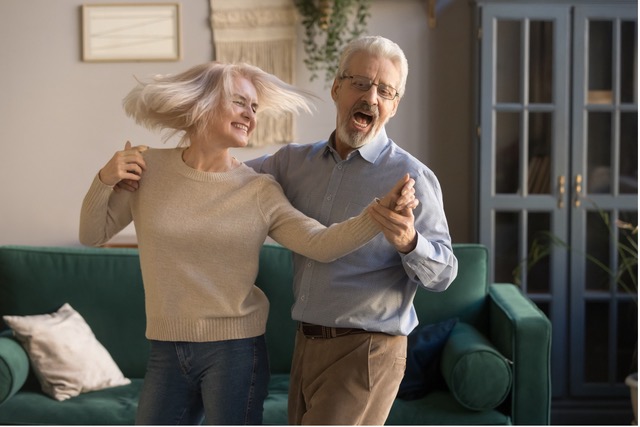Benefits of Senior Dance Therapy
Benefits of Senior Dance Therapy :
Dance therapy can be a suitable form of therapy for seniors with limited mobility and age-related conditions. Here are some of the many Benefits of Senior Dance-Therapy :
- Dance/Movement Therapy is the psycho-therapeutic use of movement that can help treat depression, ADHD, eating disorders, and more
- Dance/Movement Therapy helps connect movement and emotion to boost physical and mental health. People don’t need a background or special abilities in dance to benefit from Dance/Movement Therapy
- Dance/Movement Therapy may be beneficial for treating depression, eating disorders, ADHD, chronic pain, and Parkinson’s disease
- move and communicate, especially when it can be difficult for them to be physically active due to a disease such as Parkinson’s
- There’s research showing that dance/movement therapy can greatly improve mood state among the elderly, as well as enhance cognitive function and psychophysiological effects
- Dance movement therapy (DMT) is regarded as a useful and appropriate intervention for those who find words difficult, those with cognitive impairments, or those with limited mobility. Overall, dance therapy can be a suitable form of therapy for seniors with limited mobility and age-related conditions. It can help improve physical and mental health, enhance cognitive function, and improve mood state.
What Benefits of Senior Dance Therapy can be used
by seniors with limited mobility?
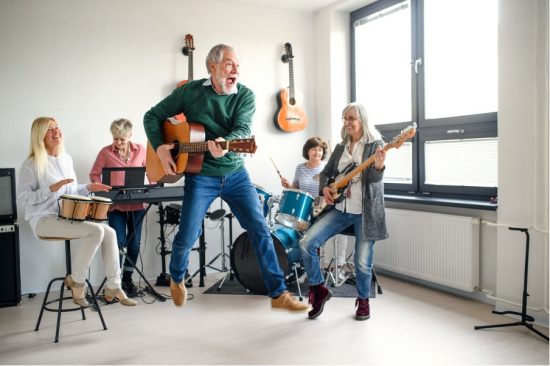
Here are some specific dance therapy techniques that can be used for seniors with limited mobility:
- Seated dance: This technique involves dancing while seated, which can be helpful for seniors with limited mobility. It can include arm movements, foot tapping, and other movements that can be done while sitting
- Gentle stretching: This technique involves gentle stretching movements that can be done while standing or seated. It can help improve flexibility and mobility
- dancing: This technique involves dancing while seated in a chair, which can be helpful for seniors with limited mobility. It can include arm movements, foot tapping, and other movements that can be done while sitting
- Authentic Movement: This technique involves having clients explore their subconscious emotions and thoughts by acting them out through improvised dancing. The client keeps their eyes closed to minimize distractions and to better connect the mind to the body. The person running the therapy session observes the process of the mover in a non-judgmental way
- Dance/movement therapy can also include other techniques such as improvisation, mirroring, and group dances. These techniques can be adapted to the needs and abilities of seniors with limited mobility
Dance therapy techniques for seniors with limited mobility can include seated dance, gentle stretching, chair dancing, authentic movement, and other techniques that can be adapted to the needs and abilities of seniors.
Can Dance Therapy be adapted to
seniors with limited mobility?
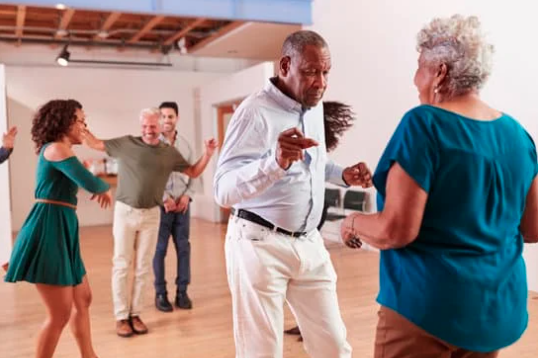
Dance therapy can be adapted for seniors with limited mobility in the following ways:
- Seated dance: Seniors with limited mobility can participate in dance therapy while seated. This can include arm movements, foot tapping, and other movements that can be done while sitting
- Gentle stretching: Seniors with limited mobility can participate in gentle stretching movements that can be done while standing or seated. This can help improve flexibility and mobility
- Chair dancing: Seniors with limited mobility can participate in dance therapy while seated in a chair. This can include arm movements, foot tapping, and other movements that can be done while sitting
- Authentic Movement: Seniors with limited mobility can participate in Authentic Movement, which involves having clients explore their subconscious emotions and thoughts by acting them out through improvised dancing. The client keeps their eyes closed to minimize distractions and to better connect the mind to the body. The person running the therapy session observes the process of the mover in a non-judgmental way
Dance/movement therapy can also include other techniques such as improvisation, mirroring, and group dances. These techniques can be adapted to the needs and abilities of seniors with limited mobility.
Overall, dance therapy can be adapted for seniors with limited mobility by incorporating seated dance, gentle stretching, chair dancing, Authentic Movement, and other techniques that can be adapted to the needs and abilities of seniors.
How can the Benefits of Senior Dance Therapy
be enjoyed by all?
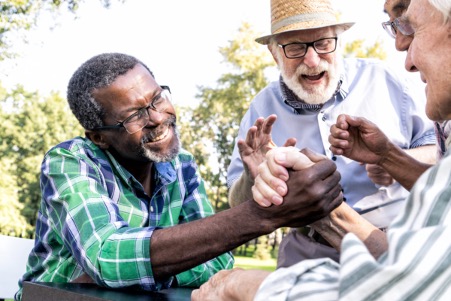
Here are some modifications that can be made to dance therapy movements for seniors with limited mobility:
- Seated dance: Seniors with limited mobility can participate in dance therapy while seated. This can include arm movements, foot tapping, and other movements that can be done while sitting
- Gentle stretching: Seniors with limited mobility can participate in gentle stretching movements that can be done while standing or seated. This can help improve flexibility and mobility
- Chair dancing: Seniors with limited mobility can participate in dance therapy while seated in a chair. This can include arm movements, foot tapping, and other movements that can be done while sitting
- Simplified movements: Dance therapy movements can be simplified to accommodate seniors with limited mobility. For example, instead of complex dance steps, simple movements such as swaying or rocking can be used
- Use of props: Props such as scarves or ribbons can be used to make dance therapy movements more accessible for seniors with limited mobility. For example, seniors can use scarves to make flowing arm movements
- Slow pace: Dance therapy movements can be done at a slower pace to accommodate seniors with limited mobility. This can help prevent falls and make movements more manageable
Overall, dance therapy movements can be modified for seniors with limited mobility by incorporating seated dance, gentle stretching, chair dancing, simplified movements, use of props, and a slower pace. These modifications can help make dance therapy more accessible and beneficial for seniors with limited mobility.
Can props be used to modify dance therapies for
seniors with limited mobility?
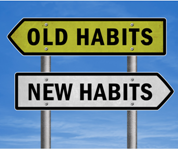
Yes, there are specific props or equipment that can be used to modify dance therapy movements for seniors with limited mobility. Here are some examples:
- Scarves: Scarves can be used to make dance therapy movements more accessible for seniors with limited mobility. For example, seniors can use scarves to make flowing arm movements
- Chairs: Chairs can be used as a prop in dance therapy for seniors with limited mobility. Seniors can hold onto the chair for balance and support while doing dance movements
- Resistance bands: Resistance bands can be used to make dance therapy movements more challenging for seniors with limited mobility. For example, seniors can use resistance bands to do arm movements that help improve strength and flexibility
- Balls: Balls can beused as a prop in dance therapy for seniors with limited mobility. Seniors can hold onto the ball for balance and support while doing dance movements
- Yoga blocks: Yoga blocks can be used to modify dance therapy movements for seniors with limited mobility. For example, seniors can use yoga blocks to help with balance and support while doing standing movements
Overall, props such as scarves, chairs, resistance bands, balls, and yoga blocks can be used to modify dance therapy movements for seniors with limited mobility. These props can help make dance therapy more accessible and beneficial for seniors with limited mobility.
Seated dance movements – the Benefits of
Senior Dance Therapy effective for all!
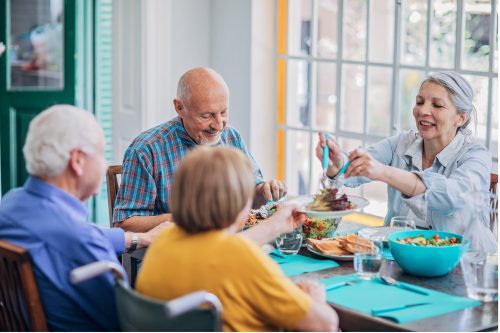
Examples of seated dance movements for seniors include:
- Arm circles: Seniors can do arm circles while seated to help improve flexibility and mobility in their shoulders and arms.
- Toe taps: Seniors can tap their toes while seated to help improve circulation and mobility in their feet.
- Shoulder shrugs: Seniors can do shoulder shrugs while seated to help improve flexibility and mobility in their shoulders.
- Hip circles: Seniors can do hip circles while seated to help improve flexibility and mobility in their hips.
- Side bends: Seniors can do side bends while seated to help improve flexibility and mobility in their spine.
- Head rolls: Seniors can do head rolls while seated to help improve flexibility and mobility in their neck.
There is no specific music genre that is more effective for dance therapy with seniors. However, music that is familiar and enjoyable to seniors can help increase their engagement and motivation during dance therapy sessions. For example, music from the 50s or 60s may be enjoyable for seniors who grew up during that time period
Can dance therapy
improve cognitive function in seniors?

Dance therapy can be used to improve cognitive function in seniors with limited mobility in the following ways:
- Improving memory: Dance therapy can help improve memory in seniors with limited mobility. For example, dance therapy movements that involve memorizing sequences or patterns can help improve memory function
- Enhancing attention and focus: Dance therapy can help enhance attention and focus in seniors with limited mobility. For example, dance therapy movements that require seniors to focus on their movements and coordination can help improve attention and focus
- Reducing anxiety and depression: Dance therapy can help reduce anxiety and depression in seniors with limited mobility. For example, dance therapy movements that involve social interaction and positive emotions can help improve mood and reduce anxiety
- Improving balance and coordination: Dance therapy can help improve balance and coordination in seniors with limited mobility. For example, dance therapy movements that involve shifting weight and changing directions can help improve balance and coordination
- Enhancing overall cognitive function: Dance therapy can help enhance overall cognitive function in seniors with limited mobility. For example, dance therapy movements that involve multiple cognitive processes such as memory, attention, and coordination can help improve overall cognitive function
Overall, dance therapy can be an effective tool for improving cognitive function in seniors with limited mobility. It can help improve memory, attention, mood, balance, coordination, and overall cognitive function.
How Often should seniors enjoy the
Benefits of Senior Dance Therapy?

The frequency of dance therapy sessions required to see cognitive benefits in seniors with limited mobility may vary depending on the individual’s needs and abilities. However, some studies suggest that dance therapy sessions should be held at least two to three times per week to see cognitive benefits in seniors with limited mobility
For example, a study on the effects of dance interventions on older adults with mild cognitive impairment found that dance activities can significantly improve global cognition, memory, visuospatial function, cognitive flexibility, attention, and executive function
Another study on the effects of dance movement intervention and exercises on elderly with early dementia found that dance-movement interventions provide emotional and social advantages
However, it is important to note that the frequency of dance therapy sessions may depend on the individual’s physical and cognitive abilities, as well as their availability and preferences. Therefore, it is recommended to consult with a healthcare professional or a dance therapist to determine the appropriate frequency of dance therapy sessions for seniors with limited mobility.

Benefits of Senior Dance Therapy
FOLLOW ON QUESTIONS
- What are some examples of seated dance movements for seniors?
- Are there any specific music genres that are more effective for dance therapy with seniors?
- What are some modifications that can be made to dance therapy movements for seniors with limited mobility
- what are some benefits of dance therapy for seniors with limited mobility compared to other forms of therapy
- How can dance therapy movements be modified for seniors with limited mobility who use wheelchairs
- What are some safety considerations when using props or equipment in dance therapy for seniors with limited mobility
- How can chairs be used as props in dance therapy for seniors with limited mobility
- what are some examples of handheld props that can be used in dance therapy for seniors with limited mobility
- How can resistance bands be incorporated into dance therapy movements for seniors with limited mobility
- What are some specific cognitive functions that have been found to improve through dance therapy for seniors with limited mobility
- what is the recommended duration of dance therapy sessions for seniors with limited mobility
- Are there any specific types of dance that have been found to be more effective for cognitive benefits in seniors with limited mobility

